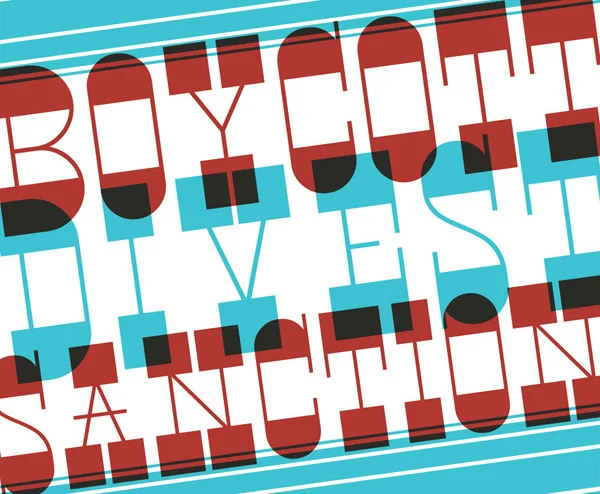When Artists Boycott
Column published in Art in America magazine, December 2014
Graphic design by Josh MacPhee, 2014.
Excerpt
A tenuous ceasefire in the Gaza Strip had been holding for only two days when the 31st São Paulo Biennial was roiled by a public letter demanding the retraction of the event’s Israeli sponsorship. Issued a week before the prominent international exhibition’s Sept. 6 opening and endorsed by 55 of the 68 participating artists and collectives, the letter charged that the signatories’ work had been “undermined and implicitly used for whitewashing Israel’s ongoing aggressions and violation of international law and human rights.”
The near-total support for the letter by artists in the biennial—six more signed by the Sept. 1 press preview—was remarkable in its own right. But still more striking was the institutional response: a collective statement of support from the biennial’s five curators—two of whom are Israeli. This move was followed by the withdrawal of Israeli government funds from the general sponsorship of the event. As a practical matter, the funds, which constituted less than half a percent of the biennial’s $10.5 million budget, were simply applied more narrowly to fund the work of three Israeli artists included in the show (a fourth, Yael Bartana, had signed the letter of protest). Still, this outcome demonstrated how support for a boycott of Israel has been growing within the contemporary art world.

